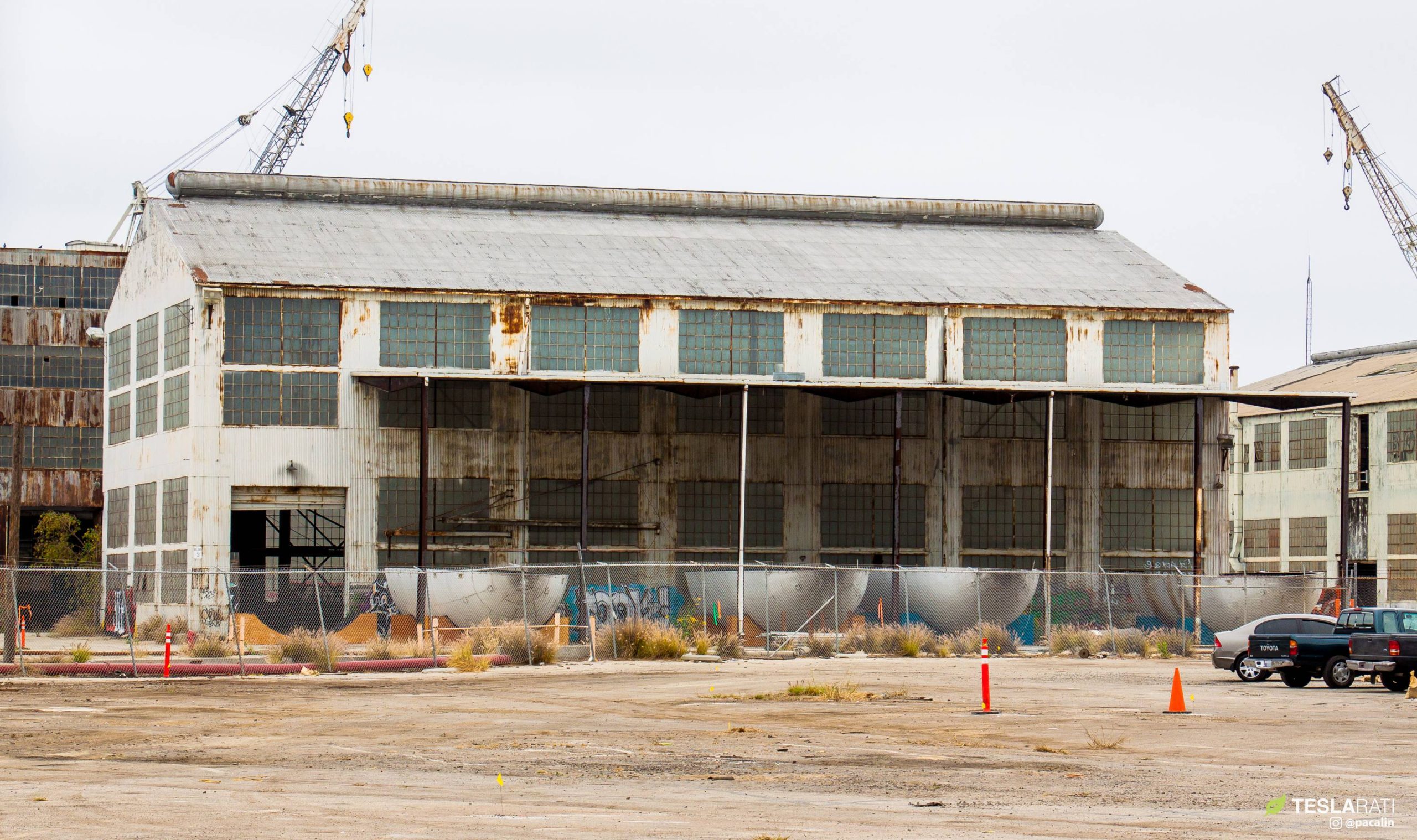
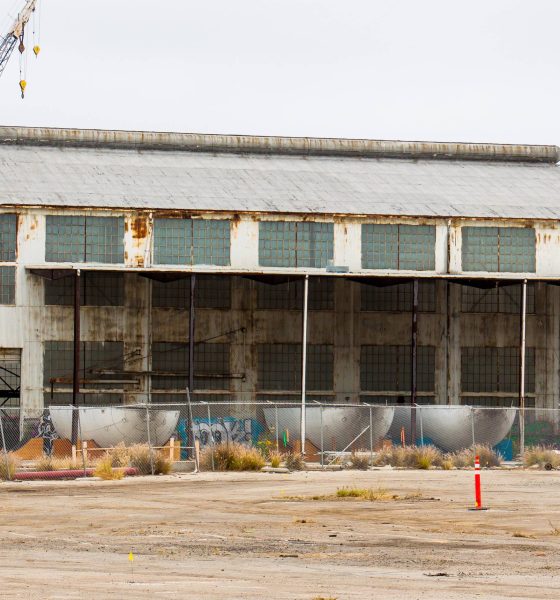
News
SpaceX resurrects California Starship factory plan just one year after abandoning it
Just nine months after scrapping temporary Starship facilities built at a Los Angeles port, the company has unexpectedly reconsidered that decision, restarting talks to build a steel Starship factory in California.
In March 2018, nearly two years ago, the public first became aware of SpaceX’s plans to build a Starship factory in Port of Los Angeles. Begun while Starship was still known as BFR (Big Falcon Rocket) and designed to be built almost entirely out of carbon-fiber composites, the company’s first in-house effort to build its next-generation rocket began in an unassuming tent erected on port property around December 2017. Unintentionally foreshadowing the future of both Tesla Model 3 and SpaceX Starship production, that temporary tent was completed in just a month or two and officially began supporting BFR prototype production in April 2018.
In December 2018, CEO Elon Musk rebranded BFR as Starship and revealed that SpaceX would take the extraordinary step of redesigning the fully-reusable rocket to use stainless steel instead of carbon fiber. One year after SpaceX began building carbon fiber hardware, Musk moved quickly to make the radical move to steel permanent, literally scrapping its BFR prototype tent and abandoning its lease of a separate facility that was meant to host a more permanent composite Mars rocket factory in the near future. Now, almost exactly a year canceling its Port of LA factory, SpaceX has returned with plans to build and finish new port-based Starship production facilities just a few months from now.
Completed in September 2018, the closest SpaceX ever got to producing its 2017 BFR iteration was a large ring-like composite structure, also known as a barrel section. Measuring some 9m (30 ft) wide and 4-6m (12-20 ft) long, both 2016, 2017, and 2018 variants of SpaceX’s next-generation fully-reusable rocket would have been assembled from a number of similar components — all to be built out of carbon composites with giant mandrels (a bit like inverse molds).
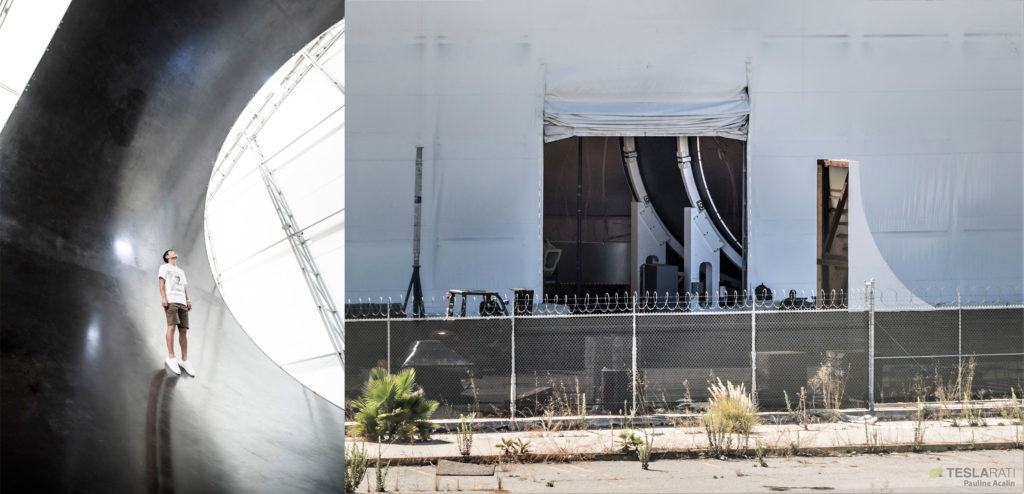

While it’s more than likely that SpaceX could have managed the feat, building a reusable orbital spacecraft like Starship out of carbon fiber posed a vast array of challenges. When Musk revealed that SpaceX would move from carbon fiber to steel in December 2018, the CEO went into some detail to explain several of those challenges and why the major change was thus worth the substantial body of work it would force the company to scrap and redo from scratch.
The two biggest hurdles for BFR were quite simple. From a technical perspective, carbon fiber is dramatically less temperature-resistant than most metals (especially steel), meaning that despite it offering a much higher strength-to-weight ratio on paper, almost every inch of the spaceship and booster’s exposed surfaces would have to be insulated. For Starship, this would be exceptionally challenging given that the spacecraft must fundamentally be able to survive numerous orbital-velocity reentries with little to no refurbishment in between. While a steel Starship would still need a proper heat shield on its windward half, the other half of its steel hull could likely be almost entirely unshielded thanks to the fact that most steels remain structural sound at much higher temperatures.

Beyond the “delightfully counterintuitive” technical properties that could make a steel Starship as light or even lighter than the carbon composite alternative, Musk also noted that a huge motivator for the switch was the fact that the cutting-edge composites SpaceX would have to buy were incredibly expensive. In September 2019, Musk stated that composites would have cost some $130,000 per ton, whereas a ton of the stainless steel SpaceX is now using can be purchased for just $2500. In simpler terms, from a material cost perspective, steel Starships and Super Heavy boosters could cost an incredible 50 times less than their carbon composite twins.
Port Factory 2.0
For now, it’s unclear exactly what SpaceX foresees for Starship’s newly re-proposed Port of LA factory. The same primary constraint remains: there is still no affordable way to ship full-scale 9m-diameter Starship hardware by road. The most likely explanation for the resurrected interest in port facilities is that SpaceX still wants to keep some major aspects of Starship manufacturing within reach of California’s vast aerospace talent pool, as well as the company’s own California headquarters, situated just 20 or so miles from Port of LA.
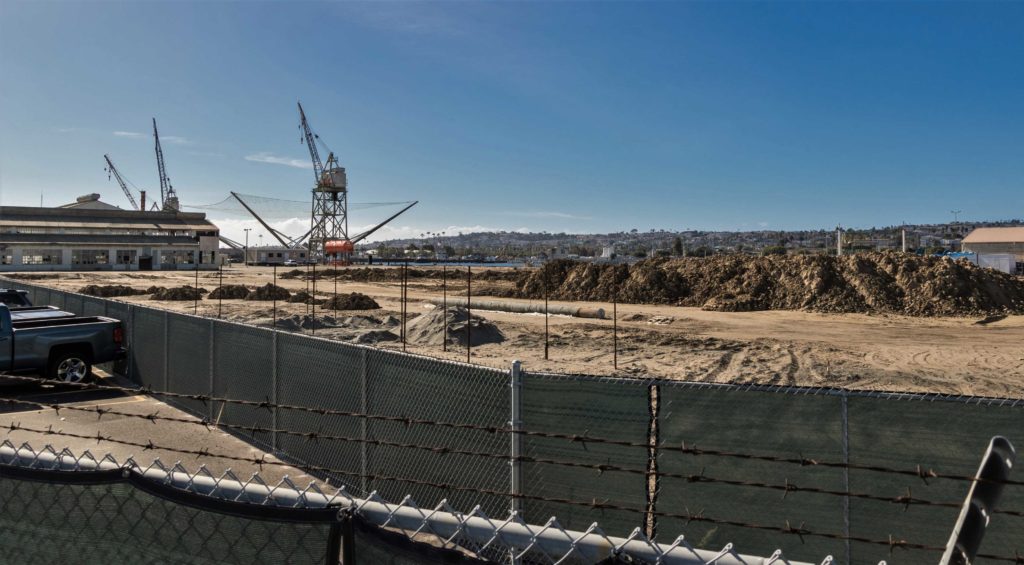
At the same time, SpaceX probably has all the space it could possibly want at its Hawthorne, CA headquarters after a massive Triumph facility was recently vacated, meaning that any intentional expansion in Port of LA is probably motivated by the need to transport massive rocket parts from California to Texas and Florida. Daily Breeze also reports that “SpaceX would manufacture its…Starship spacecraft and…Super Heavy [booster] on the property” if it receives approval, seemingly implying interest in full-scale rocket production at its prospective port factory.
Regardless of whether SpaceX wants to build smaller Starship subcomponents (i.e. nose cones, header tanks, fins, plumbing, crew compartments, etc.) or complete spaceships and boosters, the company is seemingly far more eager to get port facilities in place, this time around. Specifically, SpaceX told a city council member that it wanted to get a Port of LA facility up and running just 90 days after it expressed new interest in the concept.
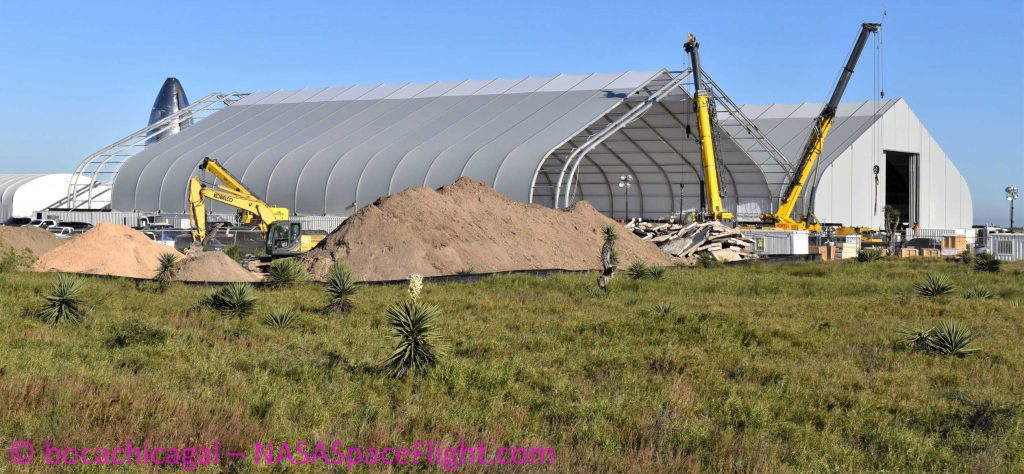

To do so, SpaceX will copy the methods used to create both Tesla’s General Assembly 4 factory addition and its own massive Starship production space in South Texas, relying on Sprung Instant Structures to erect a massive semi-permanent tent or two in an extremely short period of time. Unfortunately, because of how abruptly SpaceX abandoned its Port of LA factory lease, the company will have to repeat the permitting and environmental review process from scratch, making it very unlikely that it will be able to begin construction within the next month or two.
Regardless, SpaceX certainly remains as agile as ever. Stay tuned for updates on this surprise resurgence of plans for a Port of LA Starship factory.
Check out Teslarati’s Marketplace! We offer Tesla accessories, including for the Tesla Cybertruck and Tesla Model 3.

News
Tesla Full Self-Driving lands in a new country, its 7th
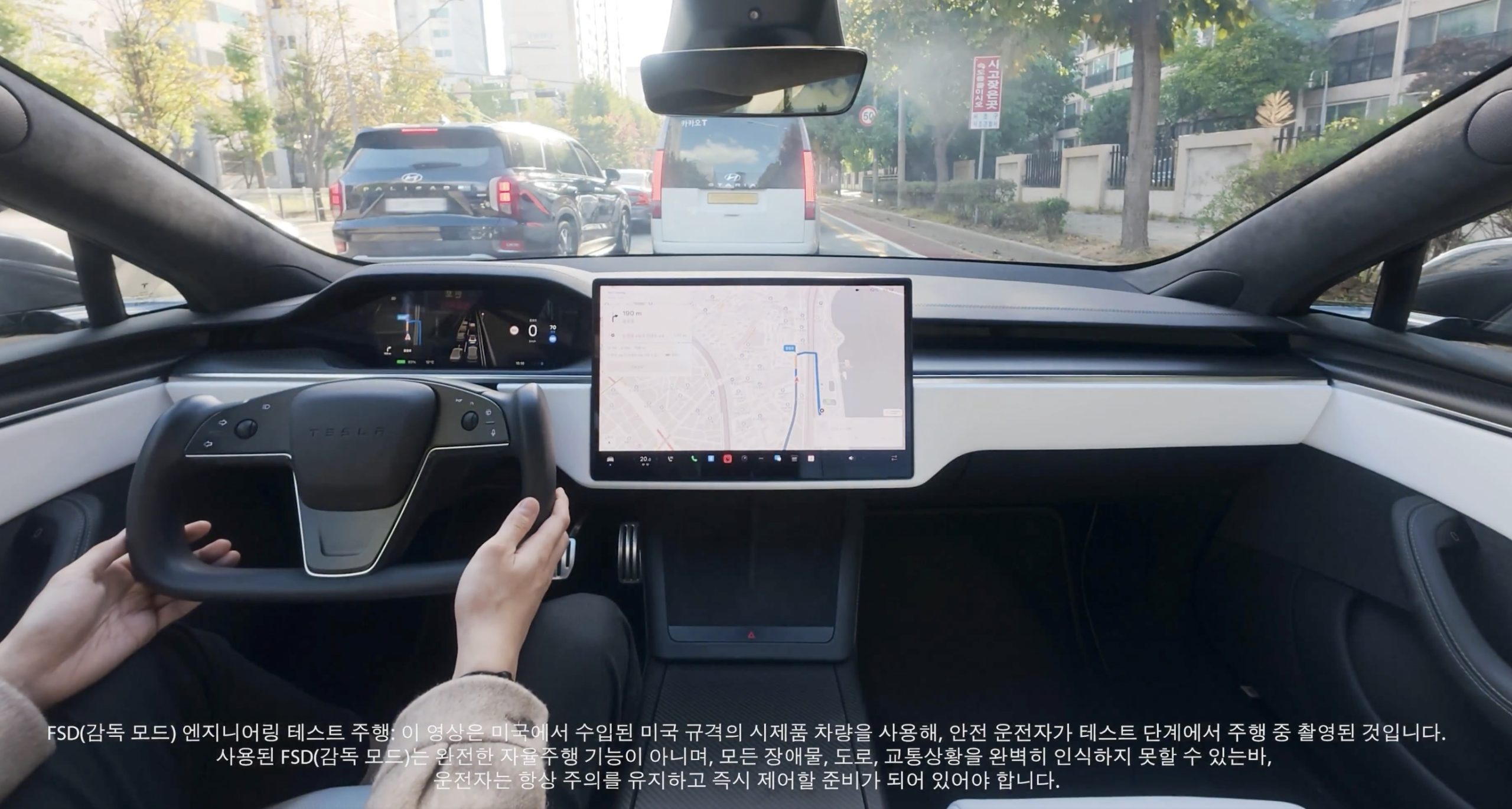
Tesla Full Self-Driving has officially landed in a new country today, its seventh overall after it launched in both Australia and New Zealand earlier this year.
On Sunday, Tesla owners in South Korea reported that the company’s Full Self-Driving (Supervised) had started arriving in their vehicles. Owners reported that it was v14.1.4, which is not the latest version available in other countries, but is one of the most recent releases Tesla has deployed to drivers:
From 6 to 7
Tesla Full Self-Driving has launched in South Korea; the 7th country to have FSD https://t.co/X6gm1SyoxV
— TESLARATI (@Teslarati) November 23, 2025
This marks the seventh country in which Tesla has enabled its Full Self-Driving suite, following the United States and Puerto Rico, Canada, China, Mexico, Australia, and New Zealand.
Tesla launched Full Self-Driving most recently in Australia and New Zealand about three months ago. The expansion is a major breakthrough for the company as it aims to launch Full Self-Driving on a global scale.
However, the company’s biggest challenge thus far has been getting European regulatory agencies to handle the red tape that has inhibited Tesla from launching its semi-autonomous driving suite on the continent. Recently, it admitted that it sees a pathway through Dutch regulatory bodies, which seem to be the most willing to work with Tesla to get FSD in Europe.
Tesla Full Self-Driving appears to be heading to Europe soon
The company said that it has driven over 1 million kilometers safely on European roads across 17 different countries in internal testing. But its path to success will be by “partnering with the Dutch approval authority RDW to gain exemption for the feature. This involves proving compliance with existing regulations (UN-R-171 DCAS) + filing an exemption (EU Article 39) for yet-to-be-regulated behaviors like Level 2 systems off-highway, system-initiated lane changes with hands-off the wheel, etc.”
Perhaps the expansion into Europe will be the biggest challenge for Tesla, but it could also yield major results and advantages for the company moving forward. Tesla said it hopes to have FSD available in Europe sometime early next year.
For now, the expansion in South Korea is the latest win for Tesla and its self-driving efforts. In the U.S., it now turns its focus toward fully autonomous operation, as it works with state agencies to launch Robotaxi outside of Texas, California, and most recently, Arizona.
Elon Musk
Tesla CEO Elon Musk teases insane capabilities of next major FSD update

Tesla CEO Elon Musk teased the insane capabilities of the next major Full Self-Driving update just hours after the company rolled out version 14.2 to owners.
Tesla Full Self-Driving v14.2 had some major improvements from the previous iteration of v14.1.x. We were on v14.1.7, the most advanced configuration of the v14.1 family, before Tesla transitioned us and others to v14.2.
However, Musk has said that the improvements coming in the next major update, which will be v14.3, will be where “the last big piece of the puzzle finally lands.”
14.3 is where the last big piece of the puzzle finally lands
— Elon Musk (@elonmusk) November 21, 2025
There were some major improvements with v14.2, most notably, Tesla seemed to narrow in on the triggers that caused issues with hesitation and brake stabbing in v14.1.x.
One of the most discussed issues with the past rollout was that of brake stabbing, where the vehicle would contemplate proceeding with a route as traffic was coming from other directions.
We experienced it most frequently at intersections, especially four-way stop signs.
Elon Musk hints at when Tesla can fix this FSD complaint with v14
In our review of it yesterday, it was evident that this issue had been resolved, at least to the extent that we had no issues with it in a 62-minute drive, which you can watch here.
Some owners also reported a more relaxed driver monitoring system, which is something Tesla said it was working on as it hopes to allow drivers to text during operation in the coming months. We did not test this, as laws in Pennsylvania prohibit the use of phones at any time due to the new Paul Miller’s Law, which took effect earlier this year.
However, the improvements indicate that Tesla is certainly headed toward a much more sentient FSD experience, so much so that Musk’s language seems to be more indicative of a more relaxed experience in terms of overall supervision from the driver, especially with v14.3.
Musk did not release or discuss a definitive timeline for the release of v14.3, especially as v14.2 just rolled out to Early Access Program (EAP) members yesterday. However, v14.1 rolled out to Tesla owners just a few weeks ago in late 2025. There is the potential that v14.3 could be part of the coming Holiday Update, or potentially in a release of its own before the New Year.
News
Tesla Full Self-Driving v14.2 – Full Review, the Good and the Bad

Tesla rolled out Full Self-Driving version 14.2 yesterday to members of the Early Access Program (EAP). Expectations were high, and Tesla surely delivered.
With the rollout of Tesla FSD v14.2, there were major benchmarks for improvement from the v14.1 suite, which spanned across seven improvements. Our final experience with v14.1 was with v14.1.7, and to be honest, things were good, but it felt like there were a handful of regressions from previous iterations.
While there were improvements in brake stabbing and hesitation, we did experience a few small interventions related to navigation and just overall performance. It was nothing major; there were no critical takeovers that required any major publicity, as they were more or less subjective things that I was not particularly comfortable with. Other drivers might have been more relaxed.
With v14.2 hitting our cars yesterday, there were a handful of things we truly noticed in terms of improvement, most notably the lack of brake stabbing and hesitation, a major complaint with v14.1.x.
However, in a 62-minute drive that was fully recorded, there were a lot of positives, and only one true complaint, which was something we haven’t had issues with in the past.
The Good
Lack of Brake Stabbing and Hesitation
Perhaps the most notable and publicized issue with v14.1.x was the presence of brake stabbing and hesitation. Arriving at intersections was particularly nerve-racking on the previous version simply because of this. At four-way stops, the car would not be assertive enough to take its turn, especially when other vehicles at the same intersection would inch forward or start to move.
This was a major problem.
However, there were no instances of this yesterday on our lengthy drive. It was much more assertive when arriving at these types of scenarios, but was also more patient when FSD knew it was not the car’s turn to proceed.
Can report on v14.2 today there were ZERO instances of break stabbing or hesitation at intersections today
It was a significant improvement from v14.1.x
— TESLARATI (@Teslarati) November 21, 2025
This improvement was the most noticeable throughout the drive, along with fixes in overall smoothness.
Speed Profiles Seem to Be More Reasonable
There were a handful of FSD v14 users who felt as if the loss of a Max Speed setting was a negative. However, these complaints will, in our opinion, begin to subside, especially as things have seemed to be refined quite nicely with v14.2.
Freeway driving is where this is especially noticeable. If it’s traveling too slow, just switch to a faster profile. If it’s too fast, switch to a slower profile. However, the speeds seem to be much more defined with each Speed Profile, which is something that I really find to be a huge advantage. Previously, you could tell the difference in speeds, but not in driving styles. At times, Standard felt a lot like Hurry. Now, you can clearly tell the difference between the two.
It seems as if Tesla made a goal that drivers should be able to tell which Speed Profile is active if it was not shown on the screen. With v14.1.x, this was not necessarily something that could be done. With v14.2, if someone tested me on which Speed Profile was being used, I’m fairly certain I could pick each one.
Better Overall Operation
I felt, at times, especially with v14.1.7, there were some jerky movements. Nothing that was super alarming, but there were times when things just felt a little more finicky than others.
v14.2 feels much smoother overall, with really great decision-making, lane changes that feel second nature, and a great speed of travel. It was a very comfortable ride.
The Bad
Parking
It feels as if there was a slight regression in parking quality, as both times v14.2 pulled into parking spots, I would have felt compelled to adjust manually if I were staying at my destinations. For the sake of testing, at my first destination, I arrived, allowed the car to park, and then left. At the tail-end of testing, I walked inside the store that FSD v14.2 drove me to, so I had to adjust the parking manually.
This was pretty disappointing. Apart from parking at Superchargers, which is always flawless, parking performance is something that needs some attention. The release notes for v14.2. state that parking spot selection and parking quality will improve with future versions.
Any issues with parking on your end? 14.1.7 didn’t have this trouble with parking pic.twitter.com/JPLRO2obUj
— TESLARATI (@Teslarati) November 21, 2025
However, this was truly my only complaint about v14.2.
You can check out our full 62-minute ride-along below:








